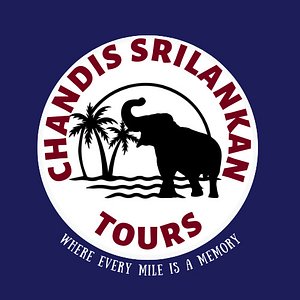History
The indigenous inhabitants of the island are the Vedda people. Groups ancestral to the modern Veddas most likely as far back as 40,000 years ago. Today, Vedda people are a tiny minority and their languages and culture are on the verge of extinction due to cultural assimilation.
The Tooth Temple in Kandy
Sri Lanka has more than 2,500 years of continuous written history, beginning with the historical epic Mahawansha, and was also mentioned in several ancient Indian texts.
One of the most famous is the Ramayana, in which the island, which was referred to as Lanka, was the island fortress of the king Ravana, who captured the wife of Rama, an incarnation of the Hindu God Vishnu.
Legend has it that Hanuman the monkey flew over to Lanka and destroyed the capital by setting it on fire, while Rama and his remaining troops later crossed over from the mainland by building a land bridge across the sea.
The island’s dominant ethnic group, the Sinhalese, arrived in Sri Lanka in the late 6th century BC, probably from Bengal or Maharashtra. Buddhism came to the island from the middle of the 3rd century BC, and a great civilization developed in cities like Anuradhapura (kingdom from c. 200 BCE to c. 1000 CE) and Polonnaruwa (c. 1070 to 1200).
The oldest of Buddhist monuments date to the Anuradhapura period. It was a period where Sri Lanka traded with other civilisations in Asia and Europe, including the Roman Empire. Most notably Sri Lanka exported cinnamon to the rest of the Old World. Other later famous kingdoms are the Dambadeniya, Yapahuwa, Gampola, Kandy and Jaffna Kingdoms.
The second-largest ethnic group in Sri Lanka, the Tamils, began to arrive shortly after the Sinhalese, and their influx was accelerated by the British. Occupied by the Portuguese in the 16th century and the Dutch in the 17th century, the island was ceded to the British in 1796.
With the capture of India, during the rule of king Sri Wikrama Rajasinghe (ශ්රී වික්රම රාජසිංහ), there were disputes between the king and his subjects, which provided the British an opportunity to invade the Kandyan Kingdom and gain power over the country.
The British made a new set of laws and turned Ceylon (as the island was called in those days) into a crown colony in 1815. As Ceylon, it became independent in 1948; its name was changed to Sri Lanka in 1972.
Sri Lanka was engulfed in a bitter civil war for thirty years between the government and the Tamil Tigers, who were fighting for an independent state for the Tamil-speaking minority. The war resulted in the estimated deaths of 100,000 people and destroyed many parts of the country, most seriously the north and east.
The war ended in May 2009 with victory for the government, but the consequences persist, and heavy emigration is still slowing the population growth.
After 2009, the economy recovered from the ruins of the civil war under the oligarchic administration of Gotabaya Rajapaksa and his family. However, the government heavily relied on foreign debt to develop the country. The combination of an anti-fertilizer policy that destroyed agricultural production, unbalanced economic structure, corruption and long running economic mismanagement, devastated the economy.
In 2022, year-long mass protests resulted in the collapse of the Rajapaksa government, and elections in 2024 swept an opposition centre-left alliance into power.
However, the nation’s many problems are yet to be solved, and the economic crisis is continuing as of 2025.
…
